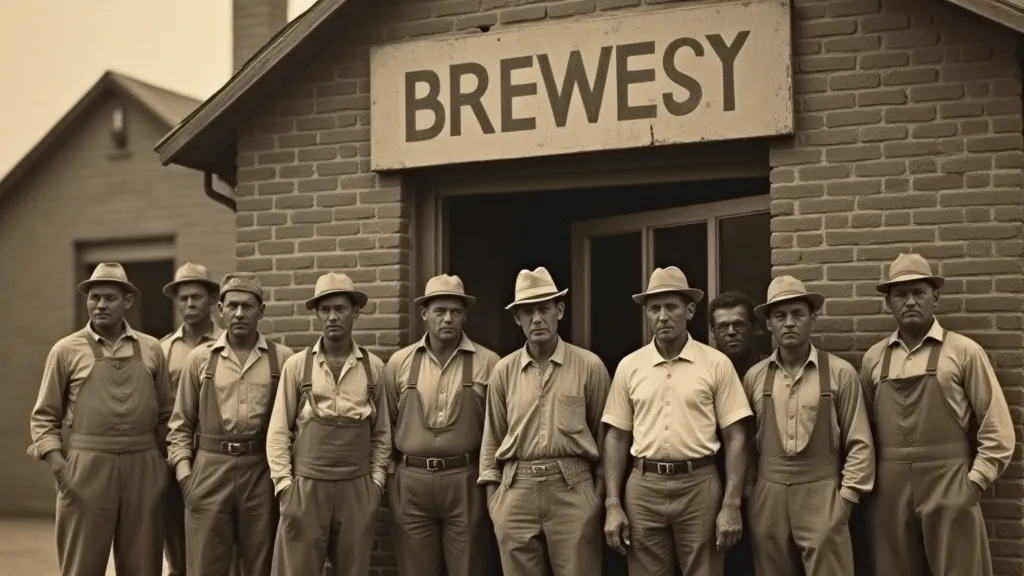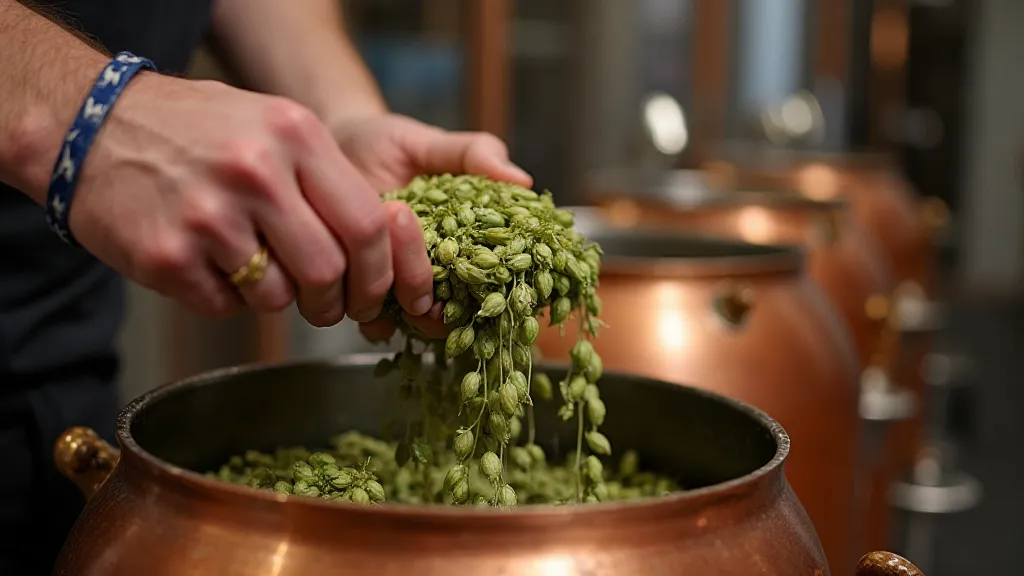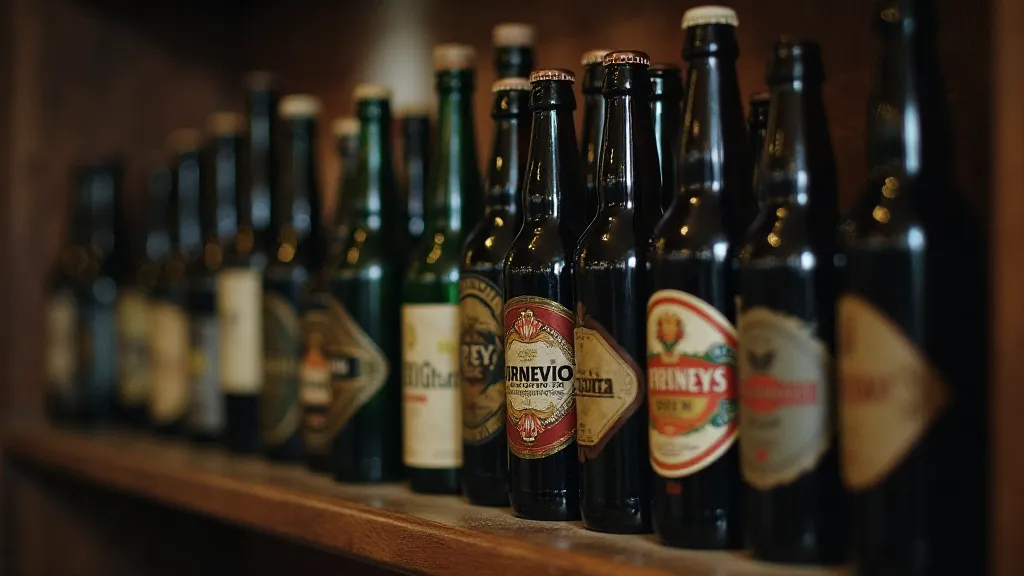Fermenting Memory: The Microbes of Place and the Alchemy of Local Identity
There's a certain melancholy that settles over me when I think about forgotten things. It's the feeling I get when holding an antique accordion – its bellows stiff from decades of silence, the keys yellowed and worn from countless dances. These instruments, like local breweries, are vessels of memory, holding echoes of a specific time and place, a community's spirit distilled into tangible form. While an accordion tells stories of shared joy and celebration, a local brewery whispers tales of a place, its history, and the intangible flavors that define it.
We often think of brewing as a science – a careful measurement of hops, barley, and yeast. But it’s so much more. It’s an alchemy, a merging of human skill with the whispers of the earth. And those whispers are carried on the invisible wings of microbes – the yeasts and bacteria that contribute to the unique terroir of a region’s beer.

Before Craft: A History Rooted in Place
The history of local breweries isn't a recent phenomenon. Before the rise of mass-produced beer and corporate giants, almost every town had its own brewery. These weren't glamorous operations; they were integral to the local economy and social fabric. Think back to the 18th and 19th centuries: beer wasn't just a beverage; it was often safer than water. Brewers, in many ways, were essential public servants, deeply connected to the well-being of their communities.
Early breweries were intrinsically tied to their local environment. The water source was paramount. Brewers knew instinctively that water from certain springs or rivers produced beer with a different character – a sharper tang, a mellow sweetness, a distinctive bitterness. They understood, without the benefit of modern microbiology, that this difference wasn’t just about mineral content; it was about the microbial ecosystem thriving within that water. The local barley, grown in the same soil, absorbing the same sunlight, also contributed to the beer’s unique profile. It wasn't just about the ingredients; it was about the *place* they came from.
My grandfather, a carpenter by trade, once told me stories of the old Schmidt Brewery in our town – a sprawling complex that dominated the skyline. It wasn't just a brewery; it was a social hub, a source of jobs, a symbol of community pride. When it closed, it wasn't just the loss of a business; it felt like a piece of the town's identity had vanished.
The Invisible Hand: Terroir and Microbial Ecosystems
The concept of *terroir* – often associated with wine – is increasingly relevant to beer. While vineyards are renowned for their terroir, the same principles apply to breweries. It’s about more than just the soil and climate; it's about the entire ecosystem – the yeasts clinging to the barley, the bacteria present in the water, even the airborne microbes that contribute to fermentation.
These microbes aren’t uniform. They’re a unique blend, shaped by centuries of interaction with the local environment. Wild yeasts, for example, can impart complex and unpredictable flavors – a subtle tartness, a fruity aroma, a distinct character that sets a beer apart from mass-produced alternatives. Brewers who embrace this “wild” aspect, often referred to as “spontaneous fermentation,” are essentially tapping into the history of their region, allowing the microbes of place to tell their own story.
Imagine a brewer meticulously studying old water records, analyzing historical barley varieties, even collecting samples of the local air. They’re not just trying to recreate a beer; they're trying to understand the microbial legacy of their place, the invisible hand that has shaped the flavor profiles of generations.
The Renaissance of Local Brewing: Honoring the Past, Embracing the Future
The craft beer revolution of the late 20th and early 21st centuries saw a resurgence of local breweries. But this wasn't just about a desire for better beer; it was about a yearning for authenticity, a desire to reconnect with the history of a place. Brewers began to seek out heirloom barley varieties, experiment with local ingredients, and embrace spontaneous fermentation – all in an effort to capture the unique terroir of their region.

This new generation of brewers isn’t simply replicating the beers of the past; they're reimagining them, incorporating modern techniques while honoring the traditions of their forebears. They're understanding that the true essence of a local brewery lies not just in the recipe, but in the story it tells – a story of place, of people, and of the invisible microbes that contribute to its distinctive flavor.
Restoring an antique accordion, like reviving a local brewery, is a labor of love. It’s about more than just repairing damaged parts; it’s about preserving a piece of history, ensuring that the music of the past continues to resonate in the present. It’s a reminder that some things are worth holding onto, that the stories of our past continue to shape our present, and that the true richness of a place lies not just in its landscapes, but in its traditions, its people, and the flavors that define it.
Collecting and Preservation: A Glimpse into a Bygone Era
For those drawn to these stories, collecting artifacts from old breweries – bottles, labels, coasters, even brewing equipment – offers a tangible connection to a bygone era. These objects aren't just souvenirs; they’re fragments of history, whispers of a time when local breweries were an integral part of the community. Similarly, a well-preserved antique accordion can offer incredible insight into the artisanry and cultural significance of a specific time and place.
The preservation of these objects is crucial. Cleaning antique bottles carefully, protecting labels from fading, and documenting the history of old brewery equipment – these are acts of stewardship, ensuring that future generations can appreciate the legacy of local brewing. The same care applies to antique accordions; carefully cleaning and storing them, researching their history and provenance, can help ensure their survival for years to come.
It’s a reminder that we are all custodians of the past, responsible for preserving the stories that define who we are. And in the clinking of a beer bottle, or the sigh of an accordion bellows, we can hear the echoes of those stories – a testament to the enduring power of place and the alchemy of local identity.






